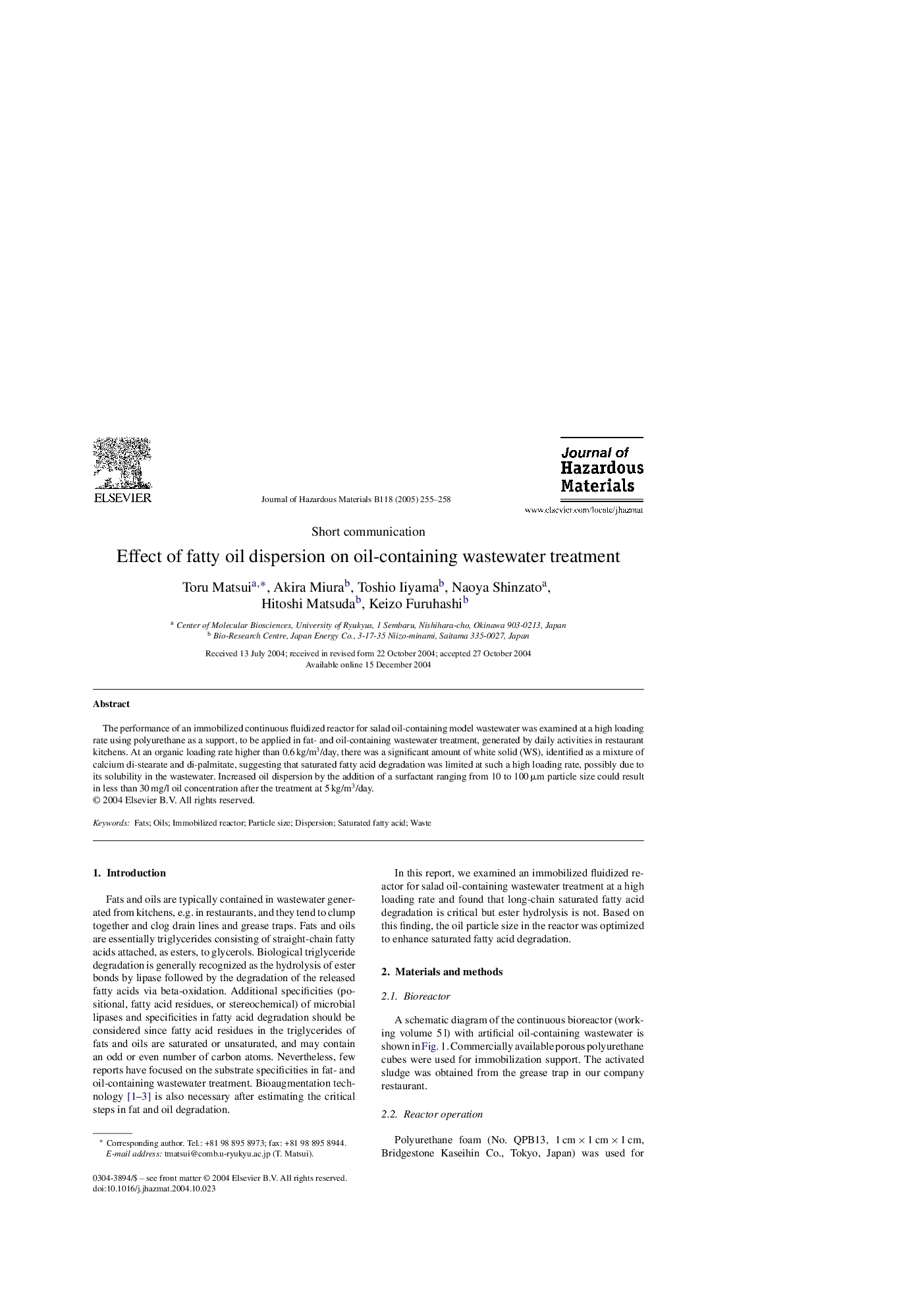| Article ID | Journal | Published Year | Pages | File Type |
|---|---|---|---|---|
| 9674407 | Journal of Hazardous Materials | 2005 | 4 Pages |
Abstract
The performance of an immobilized continuous fluidized reactor for salad oil-containing model wastewater was examined at a high loading rate using polyurethane as a support, to be applied in fat- and oil-containing wastewater treatment, generated by daily activities in restaurant kitchens. At an organic loading rate higher than 0.6 kg/m3/day, there was a significant amount of white solid (WS), identified as a mixture of calcium di-stearate and di-palmitate, suggesting that saturated fatty acid degradation was limited at such a high loading rate, possibly due to its solubility in the wastewater. Increased oil dispersion by the addition of a surfactant ranging from 10 to 100 μm particle size could result in less than 30 mg/l oil concentration after the treatment at 5 kg/m3/day.
Related Topics
Physical Sciences and Engineering
Chemical Engineering
Chemical Health and Safety
Authors
Toru Matsui, Akira Miura, Toshio Iiyama, Naoya Shinzato, Hitoshi Matsuda, Keizo Furuhashi,
